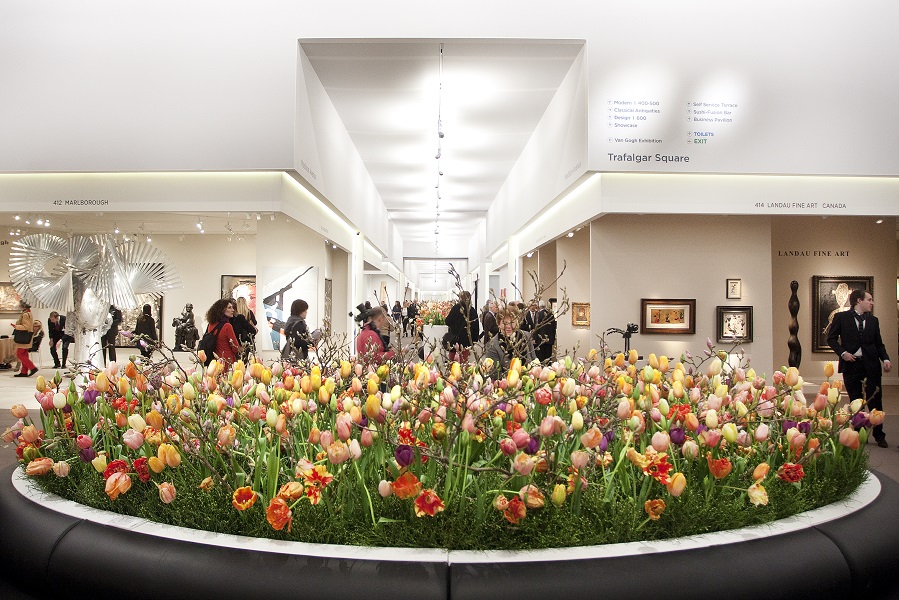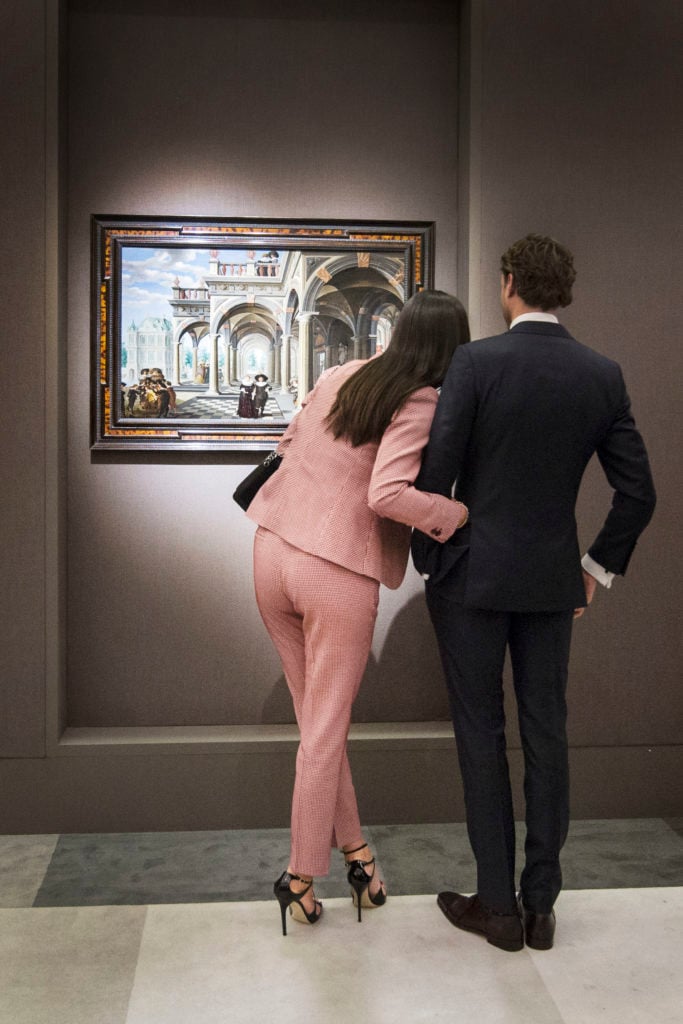Art Fairs
TEFAF Is Adding Nearly 40 Exhibitors in 2019—But Not Everyone Is Happy About It
TEFAF adds a fresh roster of dealers to next year's iteration as part of a major shake-up.

TEFAF adds a fresh roster of dealers to next year's iteration as part of a major shake-up.

Eileen Kinsella

For the first time in more than three decades, TEFAF—one of the world’s oldest and most elite art fairs—is shaking up its selection process. The fair will add 38 new exhibitors to its March 2019 edition in Maastricht, the Netherlands. Amid the recalibration, however, some longtime participants are crying foul after being left off the final roster.
The fair known for honoring tradition has been promising some big changes after the appointment of new leadership in recent years. Many observers have heralded the new approach as a breath of fresh air. But now, the brand is experiencing some growing pains. “TEFAF is changing, and change can be really difficult,” CEO Patrick van Maris acknowledged in a phone interview with artnet News.
The biggest changes are taking place in the fair’s modern section, which is now being overseen by dealer Christophe Van de Weghe. Thirteen of the 59 exhibitors are new, including Almine Rech, Pace Gallery, Gmurzynska, and Fergus McCaffrey. In the past, the modern section has remained relatively stagnant and some have complained its quality is not as high as that in other sections.
A number of the new additions are elated about joining the top-notch fair. Elliott McDonald, the senior director of Pace London, said the move aligns well with the gallery’s “significant expansion and strengthening of our relationships with clients across Europe” on the heels of its new Geneva space. (Pace previously exhibited at the fair in 2006 and 2007.)
New York dealer Fergus McCaffrey, meanwhile, told artnet News he was swayed by a positive experience at TEFAF’s spring sister fair in New York. “Many of the Americans who didn’t travel to Art Basel last year showed up. Maastricht is a much richer context, and the combination of Old Masters, design, contemporary art, and jewelry seems to be becoming a more attractive way for collectors to go and look at art.”
Not everyone is happy with the latest changes, however. Dozens of longtime exhibitors—many of whom enjoyed years of near-guaranteed entry—did not make the cut as a result of the new protocols. On October 1, Nico Delaive, director of Amsterdam-based Delaive Gallery, sent a mass email headlined “Important notice” addressing the changes and his gallery’s exclusion.
After 26 years of participating in TEFAF Maastricht, he wrote, “we were recently informed by email that for the first time ever we have been put on a waiting list… As we have not heard again from TEFAF, we have concluded the situation has not changed and we have not been admitted.”
Delaive said that the gallery had not been told the grounds for the decision and added, “We do not expect to return to Maastricht in the future, meaning TEFAF 2018 will have been the last time Gallery Delaive participated in the fair.” Delaive, who said he is furious about the decision, speculated about a range of possible reasons for the exclusion, from the artwork he shows to his colorful sneakers to the timing of an annual dinner he holds in Maastricht each year.
Iwo Bouwman, who runs a gallery in The Hague, was also dismayed by his exclusion from the fair. He has participated in the Maastricht event every year and even exhibited at its predecessor, Pictura, which launched in 1975. Bouwman took aim at TEFAF’s leaders, CEO Van Maris and chairman Nanne Dekking, both former Sotheby’s executives who were appointed to TEFAF in recent years (Van Maris in 2015 and Dekking in 2017).
“The leadership over the last couple of years has changed dramatically,” Bouwman told artnet News via email. “Don’t forget that this fair was initiated by dealers for dealers against the power of the main auction houses!!”
Bouwman said the appointments made things “complicated,” including the new selection protocol. “All in all it means that the TEFAF as we knew it, is no longer existing,” he said.

Richard Green’s stand at TEFAF Maastricht. Photo by Loraine Bodewes.
TEFAF leadership acknowledges that change is difficult, but maintains it has the long-term success of the brand in mind. “I completely acknowledge the fact that it’s painful and emotional,” Van Maris told artnet News.
He says the changes stem from a decision made by TEFAF’s board in early 2016 to open the fair to new applicants. “Before that, it was virtually impossible,” he explained. “It was a closed group. So we changed the application system.” (Although fair organizers kept the lineup largely the same for the next several years, Van Maris says no one should be completely surprised, since the change in protocol was “a signal” that further revisions were coming.)
Under the new rules, each section of the fair—which includes ancient art, antiques, jewelry, paintings, works on paper, and design—has its own selection committee. Most committee members are dealers, who Van Maris says take their job very seriously. According to the CEO, they only made one request: “If we are going to spend a lot of time on the selection process, we need to have assurance that our selection will stand and we’re not getting overruled by anyone.”
Van Maris says he and the other executives readily agreed to the stipulation based on their confidence in the committee members and their willingness to keep a record of the process.
But he countered some dealers who complained they were not officially notified of their exclusion. “I picked up the phone to inform those dealers who had not been selected for this year,” he said. “It was not a pleasant thing to have to do.”